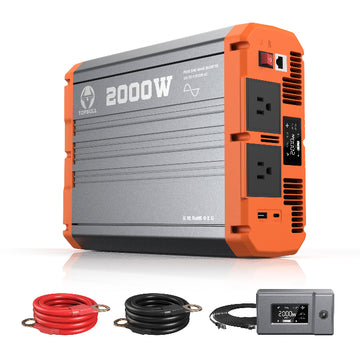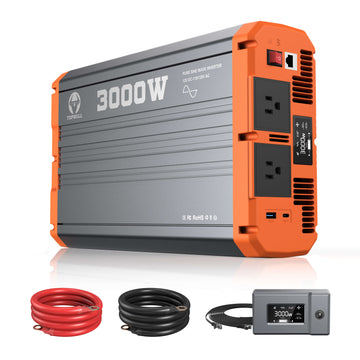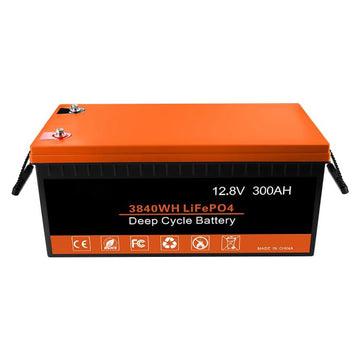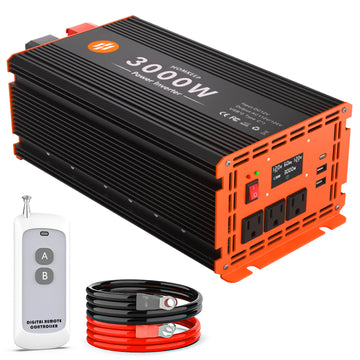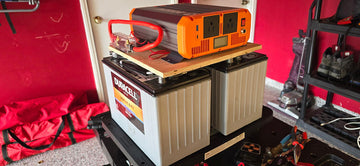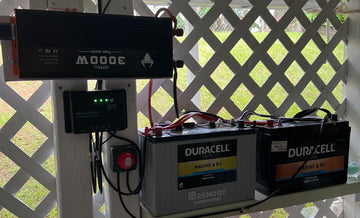Solar panels, as a key device for directly converting sunlight into electricity, have always been a focus of attention for their internal structure and working principle. So, do solar panels really contain battery cells? How many cells are included in a solar panel? In this article, we will analyse these questions in depth and take you into the mysterious world of solar panels.
What is a solar cell?
Solar cells are devices used to convert sunlight directly into electricity. They are usually made of a semiconductor material (such as silicon) and their principle of operation is based on the photovoltaic effect. When light hits the surface of the cell, photons of light excite electrons in the material, creating an electric current.
There are three main types of solar cells:
- Monocrystalline silicon cells: Highly efficient but costly to manufacture, often used in commercial and high-performance systems.
- Polycrystalline cells: relatively low cost, slightly less efficient, widely used in residential and commercial markets.
- Thin-film cells: flexible and lightweight for specific applications, but typically lower in efficiency.
Basic construction of a solar panel
A typical solar panel consists of a combination of solar cells (units) electrically connected to form a complete battery module. The construction of a solar panel usually consists of the following parts:
- Solar cell unit: the part that actually performs the photovoltaic conversion.
- Glass Surface: Protects the cells and improves the light transmission rate.
- Frame: Enhances structural stability and facilitates installation.
- Backsheet: Provides insulation and protection for the cells.
So the answer to the question ‘Do solar panels contain battery cells?’ is yes. The core of a solar panel is made up of multiple photovoltaic cells. These photovoltaic cells are the basic units of solar panels for photovoltaic conversion, which convert photons from sunlight into a stream of electrons through the photovoltaic effect to produce electrical energy.
Photovoltaic cells usually consist of two layers of semiconductor material (e.g., silicon) forming a P-N junction structure. When sunlight hits the surface of the cell, photons penetrate the surface layer and are absorbed by the internal material. These photons excite electrons in the semiconductor material, causing them to jump from lower to higher energy levels. Due to the presence of the P-N junction, these excited electrons are directed to flow in a specific direction, resulting in the formation of an electric current. This is the basic principle of photovoltaic cells to achieve photovoltaic conversion.
In a solar panel, multiple photovoltaic cell units are connected in series or parallel in a certain way to form larger cell modules. These modules are then further combined to form a complete solar panel to increase the overall power generation efficiency and output capacity.
The number and layout of solar cell units directly affects the performance and power output of the panel.
Number of cells in a standard solar panel
The number of solar cells in a solar panel is not fixed and is influenced by a number of factors. Firstly, the size and power output requirements of the solar panel are key factors in determining the number of cells. Larger solar panels usually require more cells to generate enough power.
For example, common solar panels on the market usually come in the following size and cell count configurations:
- 60-cell panels: typically used for residential use and are around 250W to 350W.
- 72-cell panels: widely used for commercial and large-scale power farms, with power up to 400W or more.
Secondly, the number of cells is also affected by the efficiency of the solar panel. Highly efficient cells are able to produce more power in the same area, thus reducing the total number of cells required. For example, monocrystalline cells typically have higher conversion efficiencies, so fewer cells will be required than polycrystalline cells on the same size panel. This difference in efficiency means that designers and engineers need to take into account space constraints as well as expected energy production capacity when selecting a solar system.
In addition, adjusting the number of cells can help engineers optimise cost-effectiveness. While high-efficiency cells may have a higher initial investment, they result in higher power output over the long term, potentially reducing the payback period. And where shading conditions are high or space is limited, it is also vital to rationalise battery configurations so that the highest possible overall efficiency can be achieved.
Future Trends in Solar Cells
As research continues, new materials and technologies are influencing the design and efficiency of solar panels. For example, chalcogenide solar cells are a new material with the potential to be highly efficient and less costly. In addition, the development of building integrated photovoltaics (BIPV) takes into account the combination of aesthetics and functionality, promoting new application scenarios for solar cells.
Summary
In summary, the number of solar cells in a solar panel is variable it is influenced by a number of factors including size, power requirements, efficiency, and technological advances. However, regardless of the number of solar cells, they are the key components of solar panels to achieve photovoltaic conversion. With the continuous progress of technology and the expansion of application scenarios, we have reason to believe that future solar panels will be more efficient, reliable and environmentally friendly, contributing more to the sustainable development of mankind.
FAQ
What kind of cells are used in solar panels
Solar panels mainly use cells made of semiconductor materials, the most common of which are silicon-based solar cells, including monocrystalline and polycrystalline silicon cells. These cells use the photovoltaic effect to convert sunlight directly into electricity. Monocrystalline silicon cells are popular for their high efficiency and long life, while polycrystalline silicon cells are suitable for larger systems due to their lower cost and better low-light performance. There are also amorphous silicon solar cells, dye-sensitised solar cells and organic solar cells, each with their own characteristics and suitable for different application scenarios.
What is the best type of solar panel cell?
There is no absolute answer to this question because different types of solar panels have their own advantages and disadvantages and are suitable for different application scenarios. For example, monocrystalline silicon panels have high efficiency and long life, which is suitable for systems that require high performance; polycrystalline silicon panels have lower cost, which is suitable for large-scale systems; amorphous silicon and dye-sensitised solar cells perform better in low-light conditions, which is suitable for areas with poor light conditions. Therefore, the choice needs to be evaluated based on specific needs and environmental conditions.
What solar cells are made of
Solar cells (i.e. the individual cells in a solar panel) are mainly made of semiconductor materials such as silicon (including monocrystalline, polycrystalline and amorphous silicon), dye molecules (in dye-sensitised solar cells) or organic polymer materials (in organic solar cells). These materials have a special photovoltaic effect that converts sunlight into electricity.
What is the difference between a solar panel and a solar cell
- Definition and structure: A solar panel is a component consisting of multiple solar cells (i.e. battery cells) connected in series or parallel, usually used to convert solar energy into electricity. The solar cell is a single battery unit in a solar panel, which is the basic unit that constitutes a solar panel.
- Functions and Uses: Solar panels, as a whole, have higher voltage and current output capabilities and are usually used in power generation systems or power supply equipment. Solar cells, on the other hand, are mainly used to form solar panels or as the basic unit of other photovoltaic conversion devices.
Is it better to have more or less cells in a solar panel?
The number of cells in a solar panel is not more or less, but needs to be evaluated according to specific needs and environmental conditions. The number of cells directly affects the output power and efficiency of the solar panel. Generally speaking, the higher the number of cells, the higher the output power, but the corresponding cost will also increase. At the same time, too many cells may also lead to problems such as uneven current distribution and increased heat loss. Therefore, when selecting solar panels, the most suitable number and type of cells need to be chosen based on a comprehensive consideration of actual demand, light conditions, installation space and other factors.

